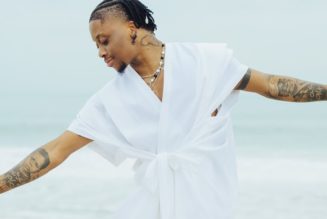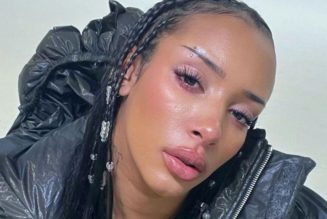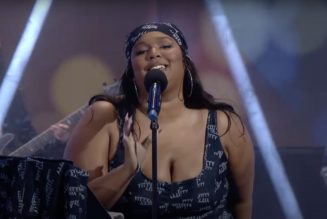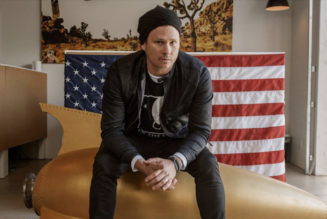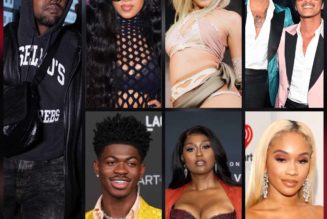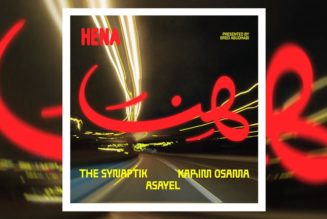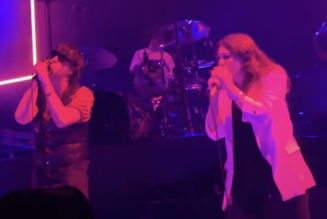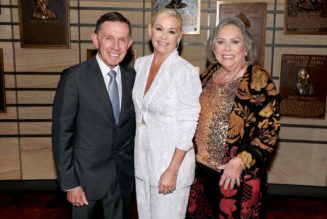
Mention the year 1983 in the context of popular music, and the biggest artist that year was Michael Jackson thanks to the massive success of his blockbuster album Thriller. Outside of the King of Pop, however, 1983 also represented the peak of the Second British Invasion of America—a period when many U.K.-based pop acts landed hit singles in the U.S. Reminiscent of the First British Invasion that happened 20 years earlier and led by the Beatles, the Second British Invasion consisted of New Wave-era artists like Duran Duran, Culture Club, the Human League, Eurythmics, Spandau Ballet, A Flock of Seagulls and Thompson Twins—all of whom became famous for their mostly synthesizer-dominated pop music and entertaining videos that were in heavy rotation on MTV. Not only did new British music become America’s hottest import, but it contributed to an increase in record sales during the early part of 1983.
Evidence of U.K. music dominance in the U.S. that summer can be found on the Billboard Hot 100 for the week of July 16, 1983, when seven of the Top 10 songs were recorded by artists of British origin. As Dave Rimmer wrote in his book Like Punk Never Happened: “In 1983, British music and British artists occupied a solid and presumably lucrative 35 percent of the Billboard top 100 in both singles and albums.”
So to mark that occasion 40 years later, below is a recap of the seven Top 10 singles by the following U.K.-based artists from that week; numbers in parentheses signify where the song was on the chart at that time. And in case you were curious, the three non-British singles in the Top 10 were: “Wanna Be Startin’ Somethin’” by Michael Jackson (5); “Never Gonna Let You Go” by Sergio Mendes (4); and “Flashdance…What a Feeling” by Irene Cara (3).
“Every Breath You Take” (1)
The Police
The Police’s first and only number-one U.S. hit is generally regarded their signature song. By the time they recorded and released their fifth and final album Synchronicity, the trio of Sting, Andy Summers and Stewart Copeland had shed the reggae/punk-pop influence of their earlier work for mainstream art-rock; also part of the group’s evolution, Sting’s lyrics took on a darker and serious tone, as evident throughout Synchronicity (at the time, the singer had split from his wife Frances Tomelty). The album’s leadoff single, the haunting “Every Breath You Take,” was ubiquitous not only during the summer of 1983 but the entire year; both the song and the Synchronicity album posed a serious challenge to Michael Jackson’s reign on the charts. Four decades later, “Every Breath You Take” continues to smolder and begs the question of whether it is a love song or a track about jealousy and surveillance. As Sting said in 1993: “I woke up in the middle of the night with that line – ‘Every breath you take, every move you make, I’ll be watching you’ – in my head. I sat down at the piano and had written it in half an hour.”
“Electric Avenue” (2)
Eddy Grant
Fusing funk, New Wave and reggae influences, Guyanese-British artist Eddy Grant broke through America with this memorable hit. Accompanied by a video that propelled the song’s popularity on MTV, the gritty “Electric Avenue” is a reference to an actual street in Brixton, London. According to Grant in a 2018 interview with The Guardian, the lyrics were inspired by the 1981 Brixton riots: “I had been talking to politicians and people at a high level about the lack of opportunity for black people, and I knew what was brewing…I myself might have been successful, but I could have easily been one of those guys with no hope, and I knew that when people felt they were being left behind, there was potential for violence. The song was intended as a wake-up call.”
“Come Dancing” (6)
The Kinks
The Kinks has the distinction of being part of the two British Invasions: the first one in the 1960s alongside the Beatles, Rolling Stones and the Who—and this one 20 years later courtesy of the nostalgic “Come Dancing” from the band’s 1983 album State of Confusion. Its lyrics were partly autobiographical for the Kinks’ singer and songwriter Ray Davies, as he told NPR’s Fresh Air host Terry Gross in 2014: “[My sisters] used to go dancing. The dance hall was called the Palais and I wrote a musical about seven years ago called “Come Dancing” about my sisters and it was – we actually made a record called “Come Dancing,” as well. So they’re a very big influence and we used to watch them dance with their boyfriends, look through the keyhole when we shouldn’t be looking. They’re a vital part of our musical education.”
“Too Shy” (7)
Kajagoogoo
One of the bands who rode on the British synthpop wave was Kajagoogoo, fronted by their charismatic lead singer Limahl. If the slinky and funky “Too Shy” sounded a bit like Duran Duran, it’s perhaps because Duran Duran’s own Nick Rhodes co-produced the song and the accompanying Kajagoogoo debut album White Feathers. “Too Shy” still remains the band’s biggest and only U.S. Top 10 hit forty years later. “Nick [Beggs, the band’s bassist] was into prog rock, Frank Zappa and some of the weird, weird stuff,” Limahl said in a 2019 Forbes interview. “I was crazy about this jazz vocal group, the Manhattan Transfer. So you had all of that influence pointing towards this. That’s why you cannot bottle the formula of a hit record. It has to be organic, it has to be experimental. You have to try things and stumble on stuff that works and then you go, ‘Oh that’s interesting, Well I like that. Let’s keep that.’ And that’s how it came about.”
“Our House” (8)
Madness
Part of the British two-tone ska revival of the late 1970s and early 1980s, Madness was already a successful group with several Top 10 hits in U.K. such as “Baggy Trousers,” “One Step Beyond” and “It Must Be Love.” But the band had not achieved chart success in America until “Our House” peaked at number seven. Today, the track, which like the Kinks’ “Come Dancing” is also nostalgic-sounding, has been a continued presence in commercials. Singer Graham “Suggs” McPherson told Forbes in 2021: “”Our House” is a phenomenon that is a bit beyond anything else we did because of its global reach. They use it on all those adverts funny enough. I suppose it’s got some resonance, yeah…sI knew that the riff was great. We were all into Motown, I thought, ‘We’re onto something here.’ But nobody really thought the chorus would become what it did, anthemic, whatever the word is.”
“Is There Something I Should Know” (9)
Duran Duran
Already a smash single in the U.K., Duran Duran’s brilliant and enigmatic “Is There Something I Should Know” became the band’s third Billboard Top 20 hit, eventually peaking at number four. With a surrealistic and stylish music video helmed by Russell Mulcahy, “Is There Something I Should Know” captured the band at the height of Duranmania; its opening lyrics: “Please, please tell me now” echoed the tone of the Beatles’ early hits—not surprisingly, the classic five-man Duran Duran lineup was dubbed ‘the Fab Five.’ “”Is There Something I Should Know” was most definitely conceived as a hit song,” Duran Duran bassist John Taylor said earlier this year. “The hits we had previously to this had almost been accidents–we had thought ourselves as an art-club band, with arena aspirations for sure, but not No 1 on the Hit Parade. And we were responding directly to parallels being drawn, particularly in the U.S.A., which excitedly referred to ‘The Second British Invasion,’ to the Beatles. We never saw that coming.”
“Time (Clock Of The Heart)” (10)
Culture Club
Led by their always quotable and flamboyant singer Boy George, Culture Club caused a stir in the U.K. when their breakthrough single “Do You Really Want to Hurt Me?” reached number one. Several months, the group carried over that song’s success into the States when it at number two on the Billboard chart. The follow-up, the sublime and yearning “Time (Clock of the Heart),” also went to number two in America. Like Duran Duran, Culture Club became a major phenomenon—many of their fans dressed up like Boy George at shows. As George wrote in his 1995 memoir Take It Like a Man: “The song was a blatant plea to Jon [Moss, Culture Club’s then-drummer and George’s former romantic partner] but as always he was oblivious. The woeful violins and violins and rumbling cellos understood perfectly. Steve [Levine, producer] hired a twenty-four-piece string section. It was his most lavish production to date…The end result was a dream.”

